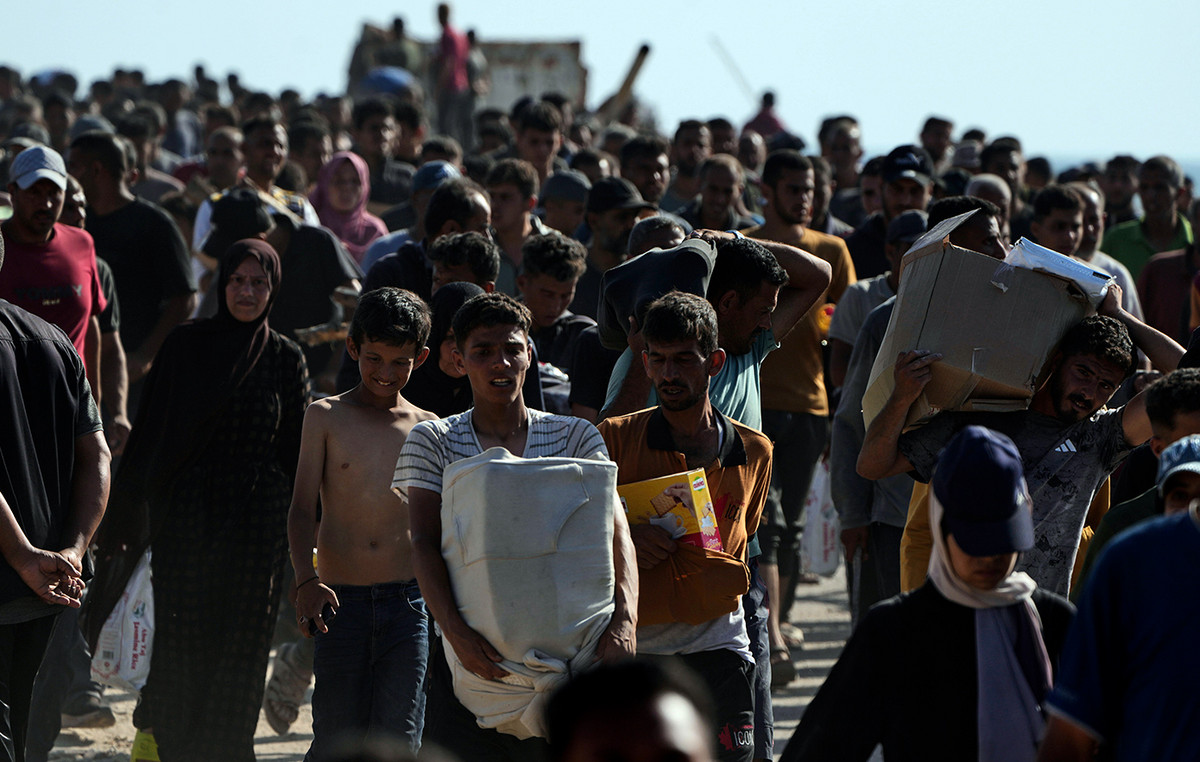O beginning of winter is a matter of attention to the respiratory diseases . The lower temperatures, recorded in much of the country, favor the circulation of viruses that cause infections such as flu, colds and Covid-19.
One of the factors causing the increase in disease transmission it is the behavior of people, who spend more time confined in closed and unventilated spaces. Dryness of the airways can cause discomfort, make breathing difficult and worsen sinusitis, bronchitis, asthma and rhinitis.
Basic care, including vaccination against influenza and Covid-19, contributes to reducing the chances of infection and worsening of diseases.
Otorhinolaryngologist Carlos Barone Júnior, from Hospital Federal do Andaraí (HFA), explains how to minimize the effects of dry weather and low humidity, which are the main factors that contribute to the increase in the circulation of viruses and fungi in the environment.
“Blankets and coats, which are kept in the closet for a long time, increase respiratory diseases in winter. Hangover nasal mucous membranes also contribute a lot”, said the doctor.
Influenza vaccination
The national campaign flu vaccination started on April 4th and was extended until next Friday (24th). The initiative focuses on children between 6 months and 5 years of age, health workers, pregnant women, puerperal women, indigenous people, the elderly and teachers.
According to the Ministry of Health, as of June 25, states and municipalities will be able to expand the campaign to the entire population from 6 months of age onwards, while vaccine stocks last.
This year, nearly 80 million doses of flu immunizations were distributed. Of this total, more than 34 million were applied, according to a survey by the Ministry of Health available on the LocalizaSUS platform.
Influenza vaccination prevents the emergence of complications resulting from infection by the influenza virus, reducing the risk of death and pressure on the health system.
Basic care helps prevent respiratory diseases
Differences between flu, rhinitis and Covid-19
Respiratory diseases can have a similar set of symptoms. However, some signs can help to differentiate the diseases.
In the case of the flu, the symptoms are more intense, lasting, and the fever is high, unlike colds, which are shorter and have milder symptoms.
Rhinitis causes sneezing in sequence, in addition to usually happening in crises that can repeat after 4 to 6 hours.
Covid-19, on the other hand, presents very variable conditions from one person to another. When present, the loss of smell and taste can be long-lasting.
Vaccination reduces risk of severe Covid-19
Caused by the SARS-CoV-2 virus, Covid-19 can cause a wide variety of clinical manifestations. The Ministry of Health classifies cases into five levels, according to severity: asymptomatic, mild, moderate, severe and critical.
Mild cases have symptoms such as cough, sore throat or runny nose, which may or may not be accompanied by loss of smell and taste, diarrhea, abdominal pain, fever, chills, muscle pain, fatigue and headache.
Moderate cases may include, in addition to mild symptoms, persistent cough and fever and signs of progressive worsening of other symptoms related to the disease, such as intense tiredness, lack of appetite and diarrhea. At this stage, patients may present with pneumonia without signs of severity.
The development of Severe Acute Respiratory Syndrome (SARS) is considered by the Ministry of Health to be a serious case of Covid-19. SARS is a complication of Influenza Syndrome (GS), which presents symptoms such as shortness of breath or respiratory discomfort, persistent pressure in the chest and oxygen saturation lower than 95% – the sharp drop in saturation may indicate a reduction in the supply of oxygen in the body. .
In the most serious phase of the disease, critical cases present symptoms such as sepsis (inflammatory response that spreads through the body), acute respiratory distress, respiratory failure or severe pneumonia. Patients may need respiratory support and admission to intensive care units (ICUs).
Vaccination against Covid-19 induces the formation of a specific immune response against the new coronavirus. Thus, when a vaccinated person is exposed to the virus, the body has neutralizing antibodies and the response of other defense cells, which act to reduce the damage caused by the infection, preventing its aggravation and the risk of death.
Bronchiolitis and pneumonia in children
The drop in temperature is also favorable for the circulation of respiratory syncytial virus (RSV), which can cause respiratory tract infections, especially in children under 5 years of age. The Ministry of Health warns that prevention and early diagnosis can help to avoid serious cases.
RSV is a leading cause of respiratory and lung infections in newborns and young children, which can lead to bronchiolitis and pneumonia. The seasonality period for the virus usually begins in May and extends until the month of September, and may extend in some regions.
Between January and April 2022, approximately 3,600 SARS cases caused by the syncytial virus were reported in the Ministry of Health system. Most cases occurred in children under 4 years of age.
The most common symptoms are low-grade fever, sore throat and headache, and nasal discharge. Patients may also have a high fever, persistent cough, difficulty breathing, wheezing, purplish lips and nails, which indicate a need for medical attention.
Although the virus can affect people of any age, the most serious cases occur in children under 2 years of age, especially under 6 months. In cases of infection, the diagnosis is clinical and can be made from a viral panel exam that detects the presence of the virus.
Measures can help reduce the risks of bronchiolitis and pneumonia, such as avoiding contact or exposure of the child with another contaminated person, strengthening basic hygiene care such as frequent hand washing with soap and water and cleaning objects that may be contaminated, such as toys.
Source: CNN Brasil







